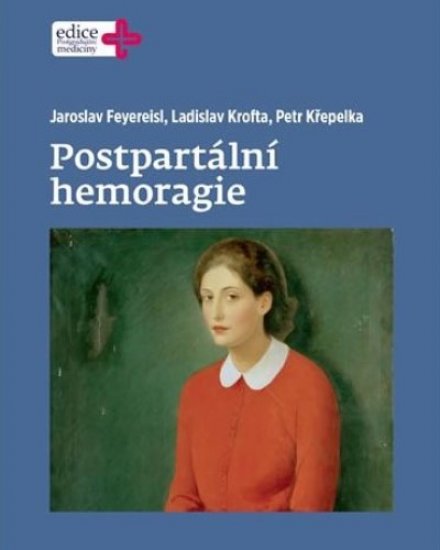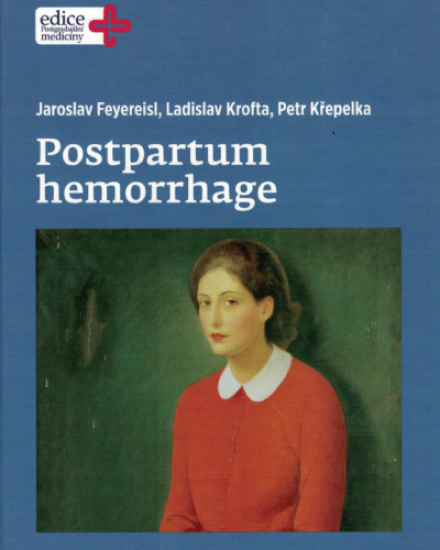Our translation of a specialized medical publication in the field of obstetrics
The translation of specialized medical publications requires a medical expert and an individual approach during each step of the process.
In this case, the client, The Institute for the Care of Mother and Child, whose head is doc. MUDr. Jaroslav Feyereisl, CSc., ordered a translation of the book Postpartum Haemorrhage (in Czech: Postpartální hemoragie).
The publication was written for physicians in the field of obstetrics, gynaecology, anaesthesiology, intensive care medicine, haematology and surgery, as well as for medical students. A specialist in the OB/GYN field was therefore an absolute necessity for providing the correct specialized terminology.
The specifics of specialized medical text translations
Correctly chosen terminology and consistency of use throughout a translation is an important condition for such texts to be understood by physicians abroad. Medical texts contain specialized medical terminology, Latin terms, abbreviations and also popular terms created by the lay public. Many terms have several meanings and therefore possible translations. The translator, a medical terminology specialist, has to carefully consider the target audience and select the right translation for individual terms based on the target readers. The translation of medical documentation for foreign doctors requires a different approach to the translation of medical articles or studies intended for a specialized international magazine.
Examples of possible translations:
- medical term: myocardial infarction (in Czech: infarkt myokardu)
- lay term: heart attack (in Czech: srdeční mrtvice)
- English abbreviation: MI
- Latin term: infarctuscordis
When a text has been translated, it is desirable to have it professionally proofread by another translator specialized in medical terminology. When human health is on the table, the translation, its content and terminology, cannot be anything less than perfect. Lastly, the translation should also undergo linguistic proofreading by a native speaker to ensure the text is grammatically and stylistically correct.

The process
Preparation of the text for translation
Firstly, it was necessary to put together the implementation team. This consisted of a translator specialized in OB/GYN, a linguistic proofreader, a pre-flight proofreader and an editor, all working under the watchful gaze of the project manager and their deputy.
The latter is familiarized with all the project details from the start and can eventually act as a back-up project manager should the need arise.
During the training, the team was familiarized with the text, the glossary of specialized terminology, the desired tone of voice for the translated text and the target readers. We know from experience that briefings like this are very important for such projects. If all the members of the team know what they are working on and what the purpose of the text is, then this has a positive impact on the results of their work.
Translation process:
- Preparation of the text for translation (conversion from PDF to an editable document, formatting codification, adjustment of pictures and graphical elements, dealing with bibliographic references, etc.).
- Specialized terminology analysis (clarification of the terms and compilation of a glossary).
- Translation of abbreviations and indices and verification of the translation by the client.
- Import of the source text into the Memsource CAT tool. This tool can analyse the text and look for repetitions or even partial similarities within segments of the text. It also helps with maintaining the consistency of style and terminology, which is especially convenient when it concerns long texts.
- Translation of the source text by a physician specialized in OB/GYN. For texts of this kind, it is necessary for the translation to be precise in content, unambiguous in meaning and comprehensible.
- Export of the translated text back into MS Word and proofreading by the translator. Part of this step is also the translation of texts in pictures that cannot be edited through a text inserted under the picture. Understandably, the pictures which contained Latin remained untranslated.
- Linguistic proofreading by a native speaker of British English. This focuses on the grammatical and stylistic accuracy of the translated text. The nature of the text required intensive communication between the proofreader and the translating physician throughout the entire process. After clarification of all the terms, the final proofreading was done by the proofreader. This resulted in the implementation of a fairly high number of changes. This came as no surprise to us. From experience we know that there is a difference between reviewing a text in parts and reviewing a text as a whole.

- Typesetting of the translated text in the Adobe InDesign graphic format (carried out by the client).
- Pre-flight check – identification of typographical changes and untranslated segments, including their translation. The preview PDF file was subjected to a pre-flight check, with all recommendations recorded by the proofreader in the form of notes for the graphic designer. The pre-flight proofreading was conducted by another native speaker of British English. This is important because it was felt appropriate to have two different native speakers of British English proofread the text (four eyes see more than two).
- Implementation of recommended changes by the graphic designer in Adobe InDesign (carried out in the client’s graphic studio).
- Professional print of the publication (performed by the client).

Since the text was divided into five parts due to the fairly short deadline, steps 1-7 of the translation process were simultaneously conducted five times by members of the implementation team. That is why it was possible, for example, to begin the linguistic proofreading before the whole text was completely translated.
Conclusion and evaluation
Judging by the client’s feedback, they were very satisfied with the translator’s degree of knowledge. It was very apparent that the selection of the right translator, with knowledge of the appropriate specialization, was crucial for the translation of such a difficult text. The aforementioned briefing of all the members of the implementation team also proved to be beneficial.
It was felt highly appropriate for the members of the team to know the purpose of the publication and to have this information available at all times during their work on the project.
Last but not least, we also need to credit our success to the carefully planned translation process. It consisted of all the necessary steps to ensure that the final text was of the highest quality in terms of the specialization, as well as linguistically and typographically. The project manager and their deputy did a great job as well: they carefully planned the schedule in order to make the process smooth, so the deadline could be met without problems.
ALSO NEED MEDICAL TRANSLATIONS?
Send a non-binding inquiry
Fill in the enquiry form and we will send you an offer within a short space of time

Email us
Contact us, send us your text, and we will give you a non-binding price offer

Call us
For quick information about our translation and interpreting services, don't hesitate to call us

